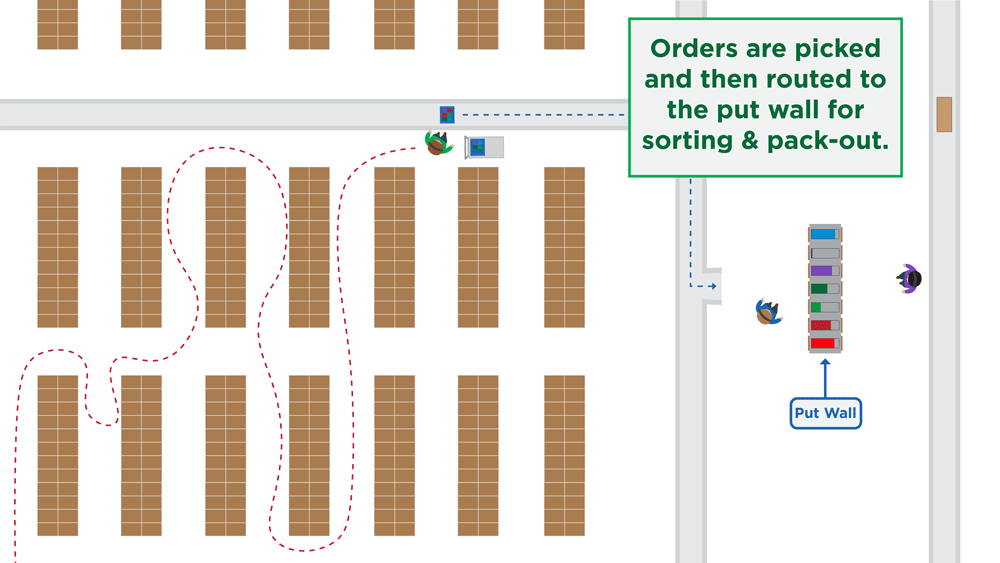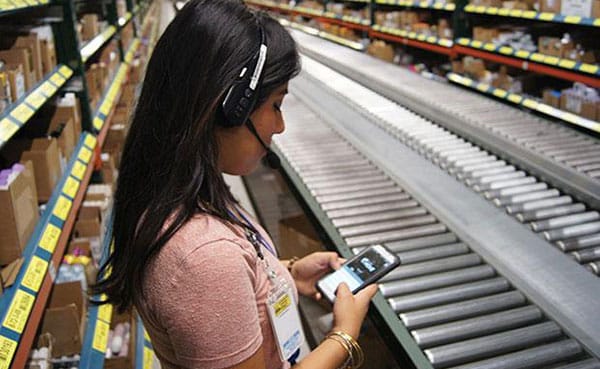Amazon Runs Out Of Space
Amazon traditionally reserves flex space for peak seasons, but with a 40% spike in sales last quarter, their reserve is already above capacity with the holiday season right around the corner. According to CFO Brian Olsvasky, “We need to build the inventory more for Q4, and we’ve run out of space.” As a temporary solution, Amazon is beginning to restrict warehouse space for third party sellers, and the longer term plan is to ramp up their square footage 50% by the end of the year. In comparison, Amazon increased square footage by 15% in 2019.
Among other options, Amazon is in discussions with Simon Property Group Inc. to turn some of Simon’s vacant store spaces into localized fulfillment centers. Simon reported they currently have 63 JCP and 11 Sears stores throughout their malls. A deal between Simon and Amazon would show how quickly the “New Era Of Fulfillment” is coming to fruition. Amazon’s potential “neighbors” are not too thrilled with the thought of having them occupying space a few doors down.
Regional Carriers Up 13%
FedEx, UPS and USPS recently announced temporary spikes in prices and fees due to the increased operational costs stemming from the surge in demand from the current pandemic. While DC’s and fulfillment centers are working tirelessly to get their products out the door, carriers are simultaneously trying to get those products to the doors of the consumer in a few days or less. In the effort, carriers are having to pay large sums of overtime pay.
Many shippers are turning to regional carriers who offer more affordable services. Regional carriers saw a 17% share in retail shipment volume in the first half of 2020 with July recording a high of 24% total volume.
FedEx, UPS, and USPS see spikes in prices and fees as the new normal during the holiday seasons. Companies shipping out large quantities of product per week are able to split their orders among the big national carriers and regional carriers in order to keep costs down and deliver products on time.
Home Depot, Lowe’s Transform Fulfillment
Home improvement and other DIY projects have vastly increased over the last few months. In response, Lowe’s and Home Depot plan to revamp their distribution networks in order to provide better service and reduce shipping costs.
Home Depot recently announced the addition of three new warehouses in the Atlanta area. Each warehouse serves a unique purpose – store replenishment, bulky order same-day and next-day delivery, and a B2B DC for maintenance, repair and operations products. In addition, they are also in the midst of a 170 supply chain facility expansion plan by building last-mile fulfillment centers.
Lowe’s plans to invest $1.7 billion to add 50 cross dock terminals, seven bulk distribution centers and four ecommerce fulfillment centers. Lowe’s plans to utilize their bulk DCs for large products, which will ship to local cross-dock terminals for delivering items directly to consumers instead of shipping from stores. This is intended to simplify store operations and processes.
Both efforts are in response to an unforeseen surge in demand and the continuing need to reduce out-of-stocks, accelerate fulfillment and improve service.
Put Walls For Ecommerce Fulfillment From Stores Or DCs
Post-pick order assembly has become a chokepoint in many ecommerce operations that have increased productivity and efficiency in their picking processes. In short, order sortation and packing haven’t always been able to keep pace with faster order picking. Put walls are a cost-effective, scalable solution that requires little hard infrastructure and is easy to implement. Put walls are a great low-capital option for ecommerce facilities, B2B DCs and even dark stores.
We recently posted a blog describing the put wall process flow. To learn more check out our blog or contact us to start a discussion.







